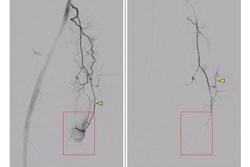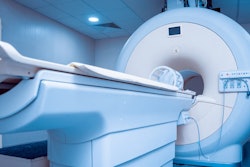Current MRI definitions of knee osteoarthritis aren't necessarily adequate for identifying which knees will develop disease in the future, researchers have found.
A team led by Alison Chang of Northwestern University Feinberg School of Medicine in Chicago reported that baseline MR imaging showed structural joint changes that did not appear on x-ray imaging -- the go-to modality for detecting the condition -- but the modality's ability to predict whether the disease would progress wasn't strong. The study results were published September 4 in Arthritis & Rheumatology.
"We identified an association between baseline MRI-defined knee osteoarthritis and the development of incident radiographic and symptomatic disease during up to 11 years of follow-up," the group noted. "However, a substantial proportion of individuals with baseline MRI-defined knee OA did not develop radiographic knee OA during follow-up."
Knee osteoarthritis develops over many years, and identifying it early could support the timely prevention of disease progression, the authors explained. The condition tends to be diagnosed with x-ray, but that modality can be limited by poor sensitivity to early structural changes, while MRI can visualize joint tissues affected by knee osteoarthritis before signs appear on x-ray imaging.
The group investigated whether MRI-defined knee osteoarthritis at baseline was associated with incident radiographic and symptomatic disease during up to 11 years of follow-up via a study that included 1,621 individuals without tibiofemoral knee osteoarthritis identified by x-ray imaging at baseline assessment; the researchers then evaluated these patients for MRI-based tibiofemoral cartilage damage, osteophyte presence, bone marrow lesions, and meniscal damage/extrusion.
They used the following definitions of MRI-defined knee osteoarthritis:
- Definition A: Definite osteophyte and full-thickness cartilage loss
- Definition B: Definite osteophyte and partial or full-thickness cartilage loss
Chang and colleagues assessed patients' knee joint Kellgren-Lawrence grade (a measure used to classify osteoarthritis), joint space narrowing, and frequent knee symptoms over the course of seven follow-up visits (at 1, 2, 3, 4, 6, 8, and 10 years).
Of the study participants, the prevalence of MRI-defined knee osteoarthritis was 17% according to Definition A and 24% according to Definition B. Fifteen percent had osteoarthritis by both definitions, 11% by one definition but not the other, and 74% did not have MRI osteoarthritis by either definition, Chang's team noted.
The authors reported the following:
| Efficacy of MRI definitions of knee osteoarthritis for predicting disease progression | ||
|---|---|---|
| Definition | Percent of patients who developed knee osteoarthritis over course of follow-up | Percent of patients who did not develop knee osteoarthritis over course of follow-up |
| Definition A | ||
| With baseline osteoarthritis | 41% | 59% |
| Without baseline osteoarthritis | 18% | 82% |
| Definition B | ||
| With baseline osteoarthritis | 36% | 64% |
| Without baseline osteoarthritis | 17% | 83% |
The team also found that knee osteoarthritis defined on MRI by definition A at baseline was associated with a 2.94 times increased risk over up to 11 years of follow-up, while knee osteoarthritis defined on MRI by definition B was associated with a 2.44 times increased risk.
Knee osteoarthritis classifications on MR imaging need fine-tuning, according to the investigators.
"The two current MRI definitions of knee osteoarthritis may not adequately identify knees that will go on to develop radiographic and symptomatic disease," they concluded. "Future efforts should focus on exploring alternative imaging-based algorithms or algorithms that incorporate MRI features, symptoms, and physical examination findings. Leveraging machine learning and artificial intelligence may enhance the precision and predictive power of these classification criteria."
The complete study can be found here.



.fFmgij6Hin.png?auto=compress%2Cformat&fit=crop&h=100&q=70&w=100)




.fFmgij6Hin.png?auto=compress%2Cformat&fit=crop&h=167&q=70&w=250)











